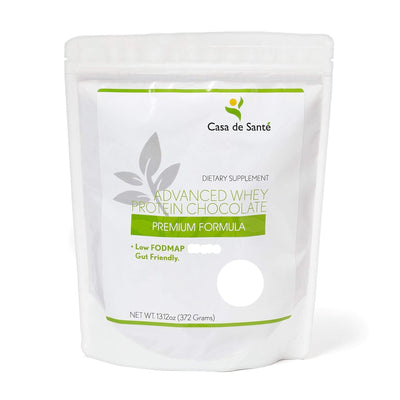Bunny Lines Face: Causes, Treatments, and Tips to Smooth Nose Wrinkles Naturally
I’ve always believed that every line on my face tells a story but some lines seem to pop up out of nowhere. Bunny lines—those little wrinkles that appear on either side of the nose when I smile or scrunch up my face—are a perfect example. They might be subtle at first yet over time they can become more noticeable and even change how my expressions look.
Understanding what causes bunny lines and how to manage them has become a top priority for me. Whether it’s due to natural aging, repeated facial movements, or skin changes, I know there are ways to smooth these lines and keep my skin looking fresh. Let’s dive into what bunny lines are and explore the best ways to address them for a confident, youthful appearance.
What Are Bunny Lines on the Face?
Bunny lines are fine wrinkles that form diagonally on both sides of the nose. I notice them most when I scrunch my nose during smiling or laughing. These lines appear due to repeated contractions of the nasalis muscle, which controls nostril movement.
Facial expressions cause bunny lines to become visible in many people, especially those with expressive faces. Over time, collagen loss and decreased skin elasticity increase their prominence.
Researchers identify bunny lines as dynamic wrinkles, similar to crow’s feet. Studies published in peer-reviewed dermatology journals connect frequent muscle movement with the early appearance of these nasal lines.
Genetic factors, age, and sun exposure impact how noticeable bunny lines become. I find that individuals with thinner skin or lighter complexions tend to see these wrinkles sooner.
Skin care professionals note that bunny lines can coexist with other expression lines, including forehead creases and glabellar lines, since facial muscles interact during gestures.
Causes of Bunny Lines
Bunny lines form on my face as a result of both internal and external factors. I notice these wrinkles become more pronounced as I age or repeatedly use my facial muscles.
Natural Aging Process
Aging affects the structure of my skin, making bunny lines more likely. Collagen and elastin levels in my skin decline starting around my 30s, which decreases skin firmness and resilience. A 2019 Journal of Dermatological Science article confirms that the dermis thins with years, leading to more visible facial wrinkles including those on the nose. Fine lines like bunny lines develop faster in people with genetic predispositions or fair skin, according to clinical studies.
Repetitive Facial Expressions
Repeated muscle contractions play a primary role in bunny line formation on my nose. Smiling, squinting, and sniffing use the nasalis muscle, creating fold patterns in the overlying skin. Aesthetic research published in Clinical, Cosmetic and Investigational Dermatology finds that animation creates repeated pressure on facial skin, deepening these dynamic wrinkles over time. If I often crinkle my nose during laughter, conversation, or emotional expression, bunny lines become more defined.
Impact of Bunny Lines on Appearance
Bunny lines change my facial expression patterns, especially when I smile or scrunch my nose. The diagonal wrinkles near my nose draw visual focus and make my expressions look more pronounced. Studies show that these lines can accentuate signs of aging on the mid-face region by creating shadow patterns that weren’t present before. Distinct bunny lines often make my nose area appear narrower and can interact with other wrinkles, like crow’s feet, multiplying the perception of skin aging.
Bunny lines give an uneven complexion, since the skin folds become fixed over time with repeated facial movements. These etchings can disrupt light reflection on my face, increasing their visibility in different lighting conditions. Photographs and high-definition images, for example, tend to exaggerate the depth of these lines. Clinical assessments observe that bunny lines signal underlying loss of collagen and elastin, both essential for smooth, supple skin.
More prominent bunny lines may impact overall facial harmony. For instance, when these lines appear alongside prominent forehead wrinkles, my features can appear less balanced. Dermatology literature documents a correlation between noticeable dynamic lines and perceived emotional states, such as stress or fatigue, even in the absence of those feelings. As bunny lines deepen, they can make my facial expressions look unintentionally tense or aged.
Treatment Options for Bunny Lines Face
Treatment options for bunny lines on the face focus on relaxing muscle movement, restoring skin volume, and boosting skin structure. I rely on intervention types based on severity and the underlying causes of my bunny lines.
Botulinum Toxin (Botox) Injections
Botulinum toxin injections target bunny lines by blocking nerve signals to the nasalis muscle, reducing dynamic movement and softening wrinkles. I find these injections produce noticeable improvement within seven to ten days, with effects lasting three to four months according to clinical studies. Expertise in precise placement is essential to avoid unwanted muscle weakening in nearby regions. Health journals indicate botulinum toxin is especially effective for dynamic bunny lines caused by repeated facial expressions.
Dermal Fillers
Dermal fillers address bunny lines by adding volume to the mid-face and smoothing etched wrinkles. I use hyaluronic acid-based formulations for immediate results, as this molecule integrates well with my natural tissue. Fillers help correct static bunny lines that remain visible without muscle contraction. Data from aesthetic research show results can persist for six to twelve months. Strategic application near the nasalis muscle provides subtle lift and restores mid-face contour.
Skincare Products and At-Home Remedies
Skincare products and at-home remedies help manage bunny lines by supporting the skin's collagen matrix and protecting against new wrinkle formation. I select formulations featuring retinoids, peptides, and 15% vitamin C serum for their ability to stimulate collagen production and neutralize free radicals. Clinical dermatology sources confirm consistent use of broad-spectrum sunscreen and moisturizers with ceramides slow etching of lines. Gentle facial massages increase microcirculation but I focus on methods that minimize repetitive muscle contraction to prevent deepening of wrinkles.
Prevention Tips for Bunny Lines
Limiting repetitive facial expressions helps reduce the risk of forming bunny lines. I consciously practice minimizing nose wrinkling during smiles or squints, since frequent use of the nasalis muscle increases these diagonal wrinkles, as corroborated by Aesthetic Surgery Journal studies.
Protecting my skin from UV exposure prevents premature collagen breakdown linked to more visible bunny lines. I apply a broad-spectrum sunscreen with at least SPF 30 every morning, whether I'm outdoors or by a window, because even indoor sunlight accelerates dermal aging.
Supporting skin structure with an antioxidant-rich topical regimen keeps my skin resilient. I use a topical vitamin C serum (10–20%) for neutralizing free radicals shown by dermatology research to protect collagen in the dermis and brighten tone in the mid-face area.
Applying a moisturizer containing hyaluronic acid improves skin hydration and elasticity, lessening the distinctness of fine lines. A study in the Journal of Clinical and Aesthetic Dermatology confirms that hyaluronic acid attracts water to the skin surface and improves the depth of wrinkles, including those on the nose.
Integrating topical retinoids (such as retinol or retinaldehyde) into my nighttime skincare routine strengthens my skin's structural proteins. Retinoids promote collagen synthesis and epidermal renewal, according to peer-reviewed trials, which can visibly prevent and soften bunny lines.
Adopting habits that support overall skin health makes a measurable difference. I avoid smoking, since research proves tobacco use accelerates facial wrinkle formation across expression lines. I stay hydrated and eat a balanced diet rich in antioxidants and healthy fats, as these nutrients contribute to skin resilience and repair.
Potential Risks and Considerations
I monitor potential risks before choosing any intervention for bunny lines. Injectable treatments like neuromodulators carry short-term risks, including swelling, redness, and mild discomfort at the injection site. Rare complications may include bruising, infection, or asymmetrical results if the dose or placement varies, as noted in clinical reviews (Dermatologic Surgery, 2018). When neuromodulators diffuse beyond the targeted muscle, I observe unintended effects such as altered facial movement or temporary drooping near the treated area.
I assess the history and sensitivity of my skin before selecting topical agents. Strong actives—like retinoids, alpha hydroxy acids, or concentrated vitamin C serums—sometimes cause irritation, flaking, or redness if introduced too quickly or used alongside other exfoliants. Patch testing and gradual introduction help minimize these reactions, especially for those with sensitive or thinner skin.
Allergic reactions or immune responses rarely occur with injectables or fillers, yet I consult with licensed professionals for a full review of my medical background and treatment goals. For fillers, I recognize that adverse effects—such as nodules or delayed swelling—may arise, particularly with improper technique or unapproved products.
I acknowledge the repeated use of certain injections for dynamic wrinkles might promote compensatory muscle movements in adjacent areas, occasionally leading to new lines or imbalances, as described in Journal of Aesthetic Plastic Surgery, 2020. Long-term dependency on injectables requires ongoing evaluation and adaptation of treatment plans.
I always prioritize sterile technique, professional experience, and realistic expectations. Misaligned treatment choices or poor practitioner experience can result in suboptimal results that are difficult to reverse. Age, skin type, and metabolic factors influence outcomes, so I set goals accordingly.
Key Takeaways
- Bunny lines are fine wrinkles that appear diagonally on either side of the nose, typically caused by repetitive facial movements and the natural aging process.
- Factors like collagen loss, genetics, sun exposure, and frequent use of the nasalis muscle contribute to the development and prominence of bunny lines.
- Treatments such as botulinum toxin (Botox) injections, dermal fillers, and targeted skincare products can effectively reduce the appearance of bunny lines.
- Preventative measures include minimizing repetitive facial expressions, practicing diligent sun protection, and maintaining a skincare routine rich in antioxidants, hyaluronic acid, and retinoids.
- Professional consultation is essential, as treatments may carry risks such as irritation, allergic reactions, or asymmetrical results, emphasizing the need for expert guidance and personalized care.
Conclusion
Navigating bunny lines has taught me that skin changes are a natural part of life but they're not something I have to accept without options. By understanding what drives these lines and exploring different approaches I feel more empowered to make choices that suit my needs and comfort level.
Every face tells a story and for me taking proactive steps with skincare and professional advice helps me feel confident in my appearance. No matter where you are in your journey remember that small changes can make a real difference.




























